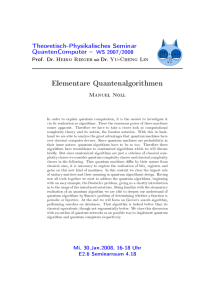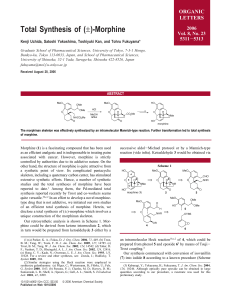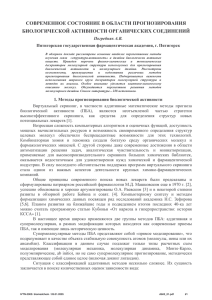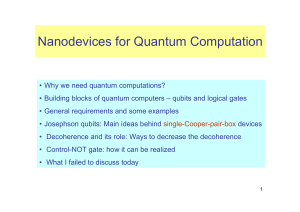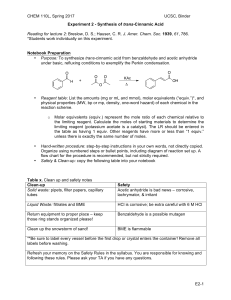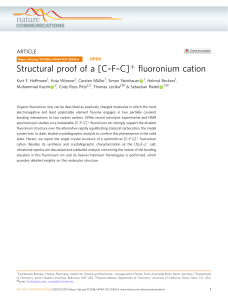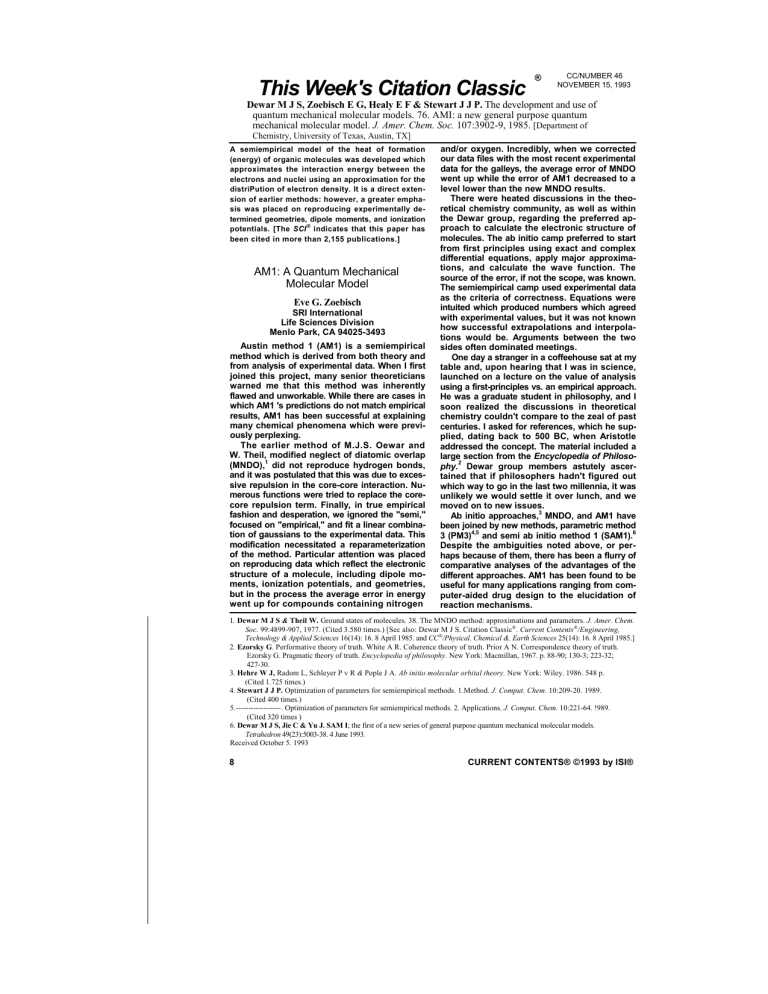
This Week's Citation Classic ® CC/NUMBER 46 NOVEMBER 15, 1993 Dewar M J S, Zoebisch E G, Healy E F & Stewart J J P. The development and use of quantum mechanical molecular models. 76. AMI: a new general purpose quantum mechanical molecular model. J. Amer. Chem. Soc. 107:3902-9, 1985. [Department of Chemistry, University of Texas, Austin, TX] A semiempirical model of the heat of formation (energy) of organic molecules was developed which approximates the interaction energy between the electrons and nuclei using an approximation for the distriPution of electron density. It is a direct extension of earlier methods: however, a greater emphasis was placed on reproducing experimentally determined geometries, dipole moments, and ionization potentials. [The SCI ® indicates that this paper has been cited in more than 2,155 publications.] AM1: A Quantum Mechanical Molecular Model Eve G. Zoebisch SRI International Life Sciences Division Menlo Park, CA 94025-3493 Austin method 1 (AM1) is a semiempirical method which is derived from both theory and from analysis of experimental data. When I first joined this project, many senior theoreticians warned me that this method was inherently flawed and unworkable. While there are cases in which AM1 's predictions do not match empirical results, AM1 has been successful at explaining many chemical phenomena which were previously perplexing. The earlier method of M.J.S. Oewar and W. Theil, modified neglect of diatomic overlap (MNDO),1 did not reproduce hydrogen bonds, and it was postulated that this was due to excessive repulsion in the core-core interaction. Numerous functions were tried to replace the corecore repulsion term. Finally, in true empirical fashion and desperation, we ignored the "semi," focused on "empirical," and fit a linear combination of gaussians to the experimental data. This modification necessitated a reparameterization of the method. Particular attention was placed on reproducing data which reflect the electronic structure of a molecule, including dipole moments, ionization potentials, and geometries, but in the process the average error in energy went up for compounds containing nitrogen and/or oxygen. Incredibly, when we corrected our data files with the most recent experimental data for the galleys, the average error of MNDO went up while the error of AM1 decreased to a level lower than the new MNDO results. There were heated discussions in the theoretical chemistry community, as well as within the Dewar group, regarding the preferred approach to calculate the electronic structure of molecules. The ab initio camp preferred to start from first principles using exact and complex differential equations, apply major approximations, and calculate the wave function. The source of the error, if not the scope, was known. The semiempirical camp used experimental data as the criteria of correctness. Equations were intuited which produced numbers which agreed with experimental values, but it was not known how successful extrapolations and interpolations would be. Arguments between the two sides often dominated meetings. One day a stranger in a coffeehouse sat at my table and, upon hearing that I was in science, launched on a lecture on the value of analysis using a first-principles vs. an empirical approach. He was a graduate student in philosophy, and I soon realized the discussions in theoretical chemistry couldn't compare to the zeal of past centuries. I asked for references, which he supplied, dating back to 500 BC, when Aristotle addressed the concept. The material included a large section from the Encyclopedia of Philosophy.2 Dewar group members astutely ascertained that if philosophers hadn't figured out which way to go in the last two millennia, it was unlikely we would settle it over lunch, and we moved on to new issues. Ab initio approaches,3 MNDO, and AM1 have been joined by new methods, parametric method 3 (PM3)4,5 and semi ab initio method 1 (SAM1).6 Despite the ambiguities noted above, or perhaps because of them, there has been a flurry of comparative analyses of the advantages of the different approaches. AM1 has been found to be useful for many applications ranging from computer-aided drug design to the elucidation of reaction mechanisms. 1. Dewar M J S & Theil W. Ground states of molecules. 38. The MNDO method: approximations and parameters. J. Amer. Chem. Soc. 99:4899-907, 1977. (Cited 3.580 times.) [Sec also: Dewar M J S. Citation Classic®. Current Contents®/Engineering, Technology & Applied Sciences 16(14): 16. 8 April 1985. and CC®/Physical. Chemical &. Earth Sciences 25(14): 16. 8 April 1985.] 2. Ezorsky G. Performative theory of truth. White A R. Coherence theory of truth. Prior A N. Correspondence theory of truth. Ezorsky G. Pragmatic theory of truth. Encyclopedia of philosophy. New York: Macmillan, 1967. p. 88-90; 130-3; 223-32; 427-30. 3. Hehre W J, Radom L, Schleyer P v R & Pople J A. Ab initio molecular orbital theory. New York: Wiley. 1986. 548 p. (Cited 1.725 times.) 4. Stewart J J P. Optimization of parameters for semiempirical methods. 1.Method. J. Comput. Chem. 10:209-20. 1989. (Cited 400 times.) 5. ------------------. Optimization of parameters for semiempirical methods. 2. Applications. J. Comput. Chem. 10:221-64. !989. (Cited 320 times ) 6. Dewar M J S, Jie C & Yu J. SAM I; the first of a new series of general purpose quantum mechanical molecular models. Tetrahedron 49(23):5003-38. 4 June 1993. Received October 5. 1993 8 CURRENT CONTENTS® ©1993 by lSI®
